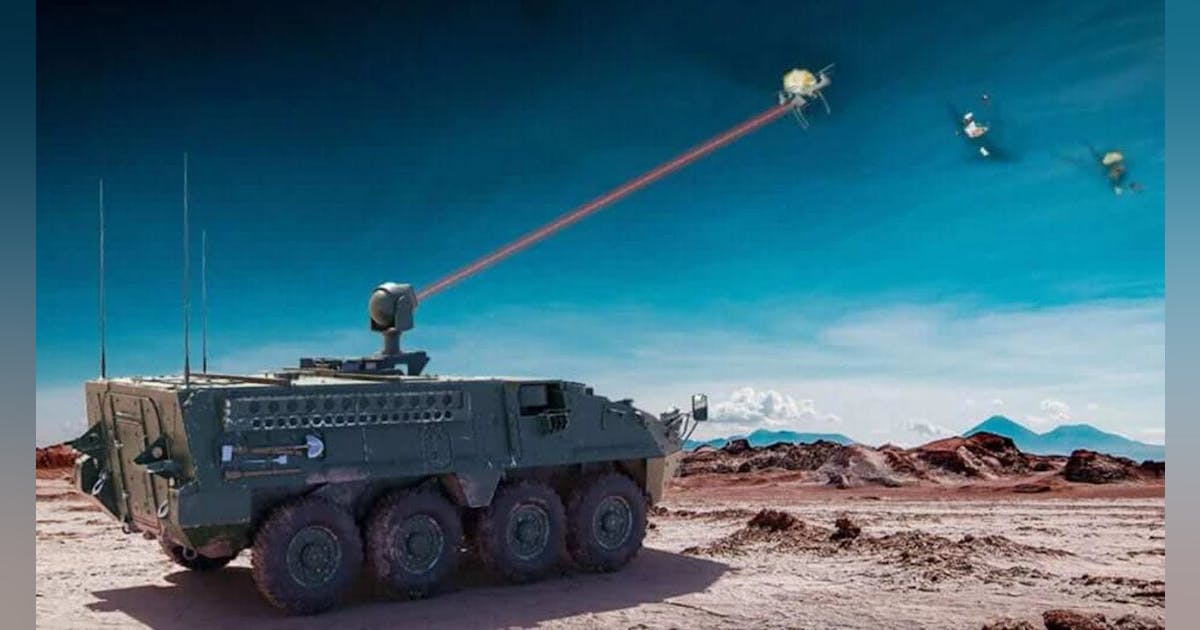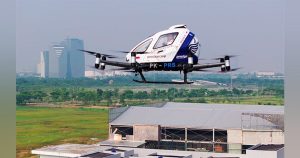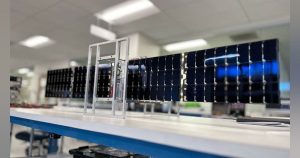Navy Taps Coherent Corp. for Pulsed Fiber Laser Weapons: Countering the Drone Swarm Threat
Imagine a naval vessel navigating the seas, surrounded by a mounting threat of uncrewed aerial and surface vehicles. The implications? National security, fleet protection, and the overall future of maritime defense. Enter the groundbreaking solution: high-energy pulsed fiber lasers, developed to deliver precision strikes at the speed of light. In June 2025, this vision advanced closer to reality as U.S. Navy researchers awarded Coherent Corp. a contract to design and manufacture pulsed fiber laser weapons for counter-uncrewed vehicle missions. What are the implications for modern warfare, and why is this technology so revolutionary? Let’s delve into it.
The Counter-Drone Challenge
Drones—compact, swift, and more accessible than ever—have reshaped the battlefield. They range from reconnaissance tools to direct attack platforms, forming swarms of uncrewed aerial systems (UAS) and uncrewed surface vehicles (USV) that pose complex threats beyond traditional defenses. Recent conflicts have demonstrated how even a few drones can debilitate billion-dollar assets or interrupt crucial operations, making effective countermeasures a priority for naval strategists.
Coherent’s Mission: Pulsed Fiber Lasers for the Navy’s SONGBOW Project
Coherent Corp., a leader in photonics and laser technology, has been chosen by the U.S. Office of Naval Research to spearhead the $29.9 million “SONGBOW” project (Pulsed Fiber Lasers and Directed Energy Subsystems with High Bandwidth Wavefront Control). The primary objectives include:
- Developing pulsed fiber lasers for activities such as remote sensing, illumination, and high-energy operations against uncrewed threats.
- Building a 400-kilowatt (kW) directed-energy subsystem by connecting modular 50-kW fiber lasers with an advanced beam-control setup.
- Providing quick, accurate, and scalable countermeasures for Navy and Marine Corps ships, ready to dismantle drone swarms and other emerging threats at sea.
This initiative is more than just research and development; it signifies a major commitment to practical directed-energy weapons, with project expectations set to conclude in January 2027.
Why Pulsed Fiber Lasers? The Science Behind the Solution
Fiber lasers direct light through optical fibers, offering several benefits:
- Compactness and modularity: Facilitates easier installation on ships or vehicles.
- Scalability: Allows combining multiple fiber lasers (“tiled”) for higher power output.
- Reliability and efficiency: Provides low maintenance with high uptime and reduced logistical demands.
Pulsed operation allows these lasers to:
- Release brief, high-intensity energy bursts—ideal for neutralizing fast-moving targets like drones.
- Minimize heat buildup, crucial for continuous-wave systems on mobile platforms.
These features make pulsed fiber laser weapons exceptionally fit for naval defense, especially in countering swarms of small, agile, and unpredictable threats.
What Makes the Navy’s Approach Unique?
- High Power, High Precision: The goal of 400 kW output aims to combat even fortified or fast-moving threats.
- Advanced Beam Control: Ensures the directed energy is concentrated accurately—even in dynamic maritime settings where the ship and targets are in motion.
- Dual Role: Sensing and Lethality: The laser systems not only neutralize threats but also aid in remote sensing and illumination, elevating situational awareness.
- Modularity for Upgrades: 50-kW modules allow for flexible scaling and redundancy; if one module fails, others remain functional.
From Science Fiction to Reality: The Directed Energy Age
For years, high-energy lasers seemed like science fiction—think *Star Wars* or games like *Call of Duty*. Yet advancements in photonics, optics, and power systems are turning those dreams into reality. Israel’s Iron Beam system has shown real-world combat effectiveness by intercepting rockets and drones with lasers. The U.S. Navy and its associates are racing to develop similarly transformative capabilities.
“Lasers offer rapid, virtually unlimited shots as long as there’s power, with pinpoint precision. When facing drone swarms, this adaptability is vital. The Navy’s investment reflects trust that these technologies are ready for actual operations.”
— Senior Defense Analyst
Coherent Corp.: The Technological Powerhouse Behind the Project
Coherent is recognized for its profound expertise in:
- Vertically integrated photonic supply chains—from semiconductors to laser assemblies
- High-power fiber laser manufacturing
- Advanced optics and beam-director systems
Their latest wave of industrial and military fiber lasers, such as the EDGE FL series, illustrates Coherent’s proficiency in delivering both power and reliability. The company’s dedication to domestic sourcing and manufacturing in California enhances the security and resilience of supply chains for key defense applications.
How Will the System Work in Practice?
Envision this: A U.S. Navy ship detects an oncoming swarm of hostile drones. Within moments:
- The laser system is cued by sensors.
- The pulsed fiber laser, equipped with adaptive optics and rapid beam steering, locks onto targets.
- Each laser pulse releases a burst of energy that disrupts, burns through, or destroys the drones or USV threats.
- The “ammunition” is just electrical power; reloading is virtually instant.
Benefits:
- Near-zero cost per shot (in contrast to missiles or conventional armaments)
- No need for explosive warheads, reducing collateral risk
- Unlimited shots (as long as power is accessible)
- Instantaneous engagement—essential for large-scale swarm or saturation attacks.
From Drones to Directed Energy: Real-World Scenarios
Use Case 1: Countering Aerial Swarms
A small vessel releases a dozen explosive-carrying quadcopters towards a fleet. Traditional defenses intercept some, but an overwhelming attack breaches them. A fiber laser system, however, can swiftly target and disable each drone sequentially.
Use Case 2: Defeating Fast Boat Swarms
In the Strait of Hormuz, unmanned speedboats race toward a destroyer. The laser detects, tracks, and selectively disables propulsion or control systems without jeopardizing nearby civilian vessels.
Challenges on the Horizon
Innovations often accompany challenges:
- Power and Cooling: Providing hundreds of kilowatts of laser energy on a ship demands vast power and advanced thermal management.
- Atmospheric Effects: Marine air, salt spray, and turbulence can deteriorate beam quality; adaptive optics and robust engineering are vital.
- Rules of Engagement and Safety: Directed energy must be carefully integrated with ship systems to prevent friendly fire or accidental events.
The Road Ahead: SONGBOW and Beyond
Under the SONGBOW initiative, Coherent’s focus will encompass three primary phases from late 2024 to early 2027:
- Design and prototyping of modular pulsed fiber laser units
- Integration with precision beam-control and ship systems
- Field testing, validation, and possibly operational deployment
Initial funding of $12.88 million was provided for research and development, with further options and extensions contingent on early accomplishments. The program underscores the U.S. Navy’s intent to lead in operationalizing directed-energy weapons for combat missions.
The Human Element: Coherent’s Approach
Coherent’s triumph stems from more than just technology:
- Teamwork and Innovation: Multidisciplinary teams connecting engineering, optics, and defense expertise.
- Customer Partnership: Close coordination with Navy research and operational command ensures solutions align with real-world needs.
- Continuous Improvement: Incorporating lessons from allied programs—like Israel’s Iron Beam—quickly accelerates progress.
“Our collaboration with Coherent has shown how rapidly innovation can transition from lab to fleet. Their fiber laser prototypes have amazed even the most skeptical experts with reliability and strength.”
— U.S. Navy Project Lead
FAQs and Expert Tips
Q: Will these lasers replace missiles?
A: Not completely. Directed-energy weapons will augment, not replace, kinetic options—especially for drone swarms and unconventional threats.
Q: How safe are these systems?
A: Lasers offer precise, scalable force with minimal risk of unintended collateral damage—vital on crowded ships or near civilian areas.
Q: When will we see these in action?
A: Prototypes are anticipated within 2 years, with potential deployment by 2027 following successful testing.
Conclusion: A New Era in Naval Defense
The U.S. Navy’s alliance with Coherent Corp. marks a crucial advance toward defeating the contemporary “drone swarm” threat. By integrating American innovation in pulsed fiber lasers, beam control, and practical operational insight, the forthcoming generation of naval directed-energy weapons will secure maritime domains—at the speed of light. No longer science fiction, the future has arrived, and it’s laser-oriented.
For further insights into advanced photonics and defense technology, continue following our in-depth analyses. The future is being shaped—one beam at a time.













